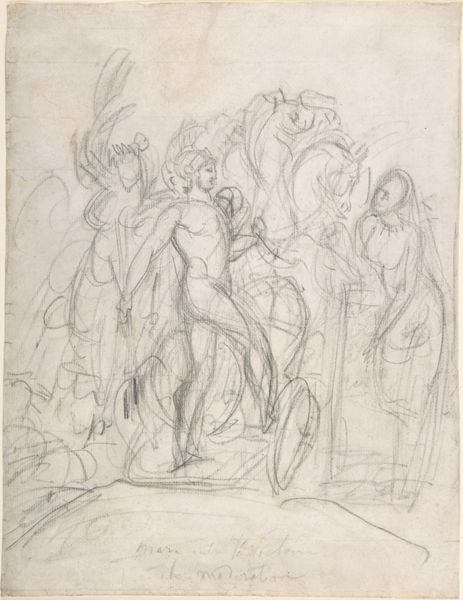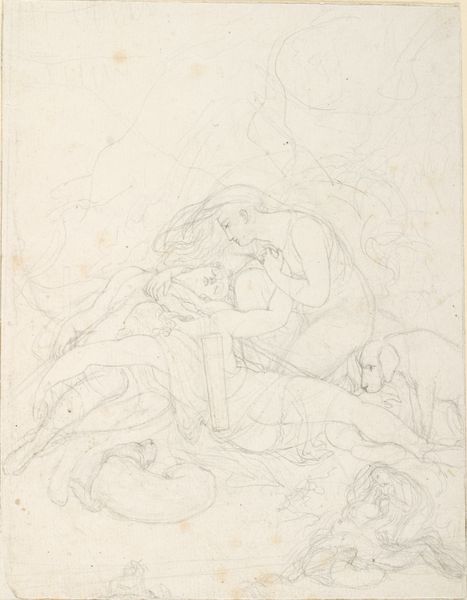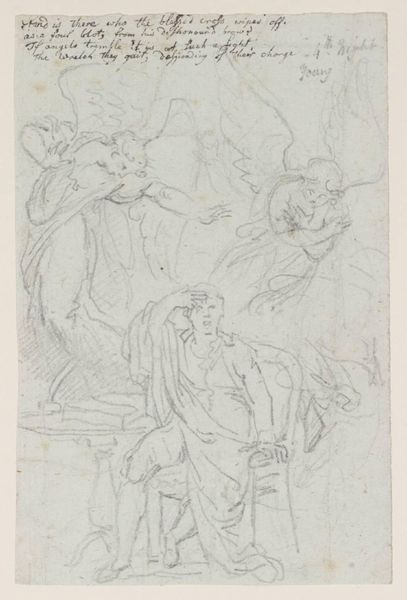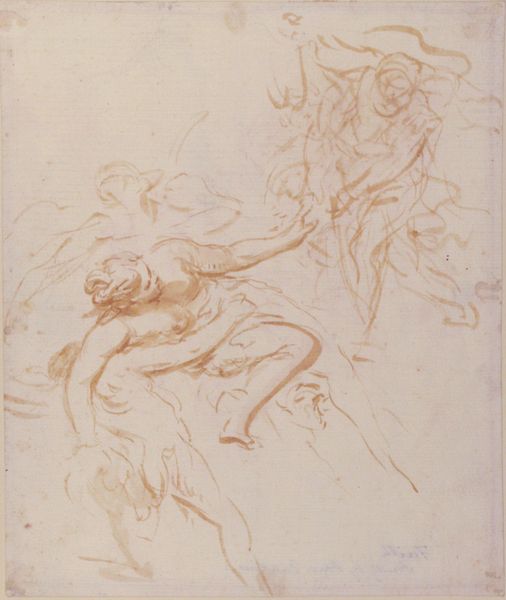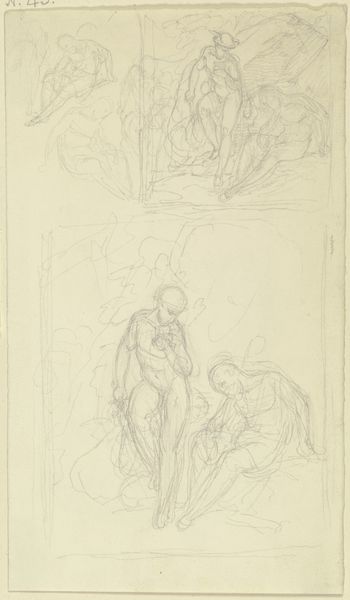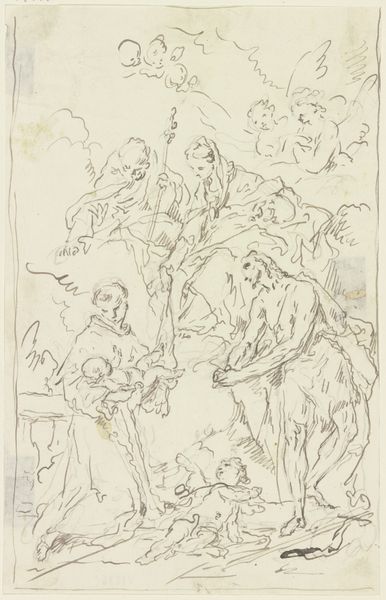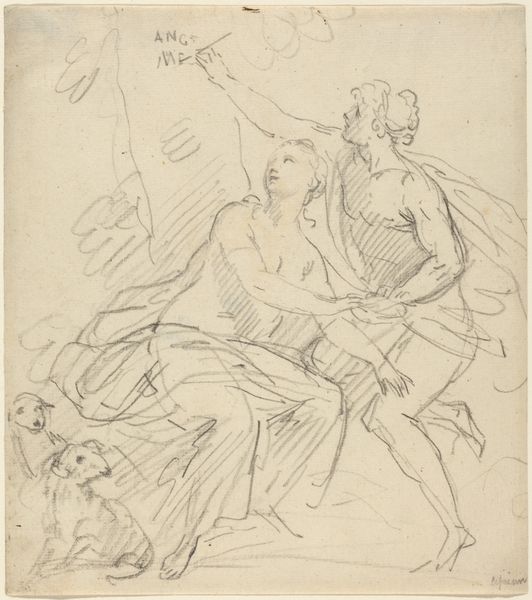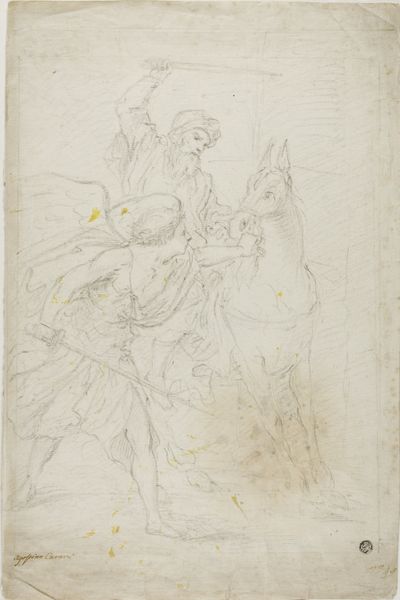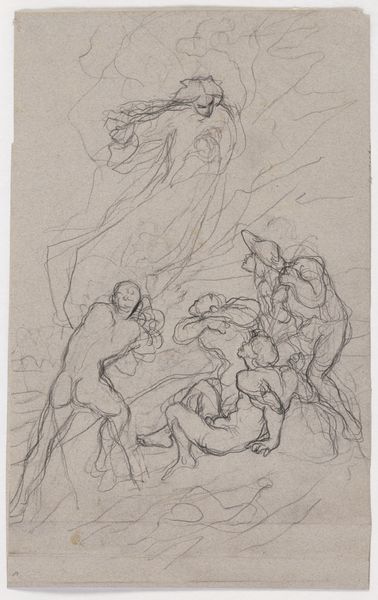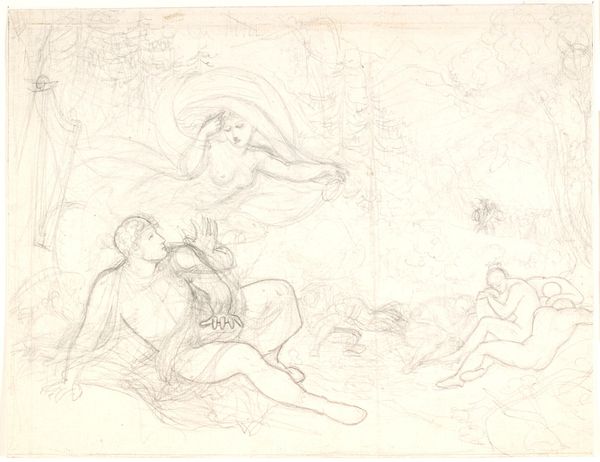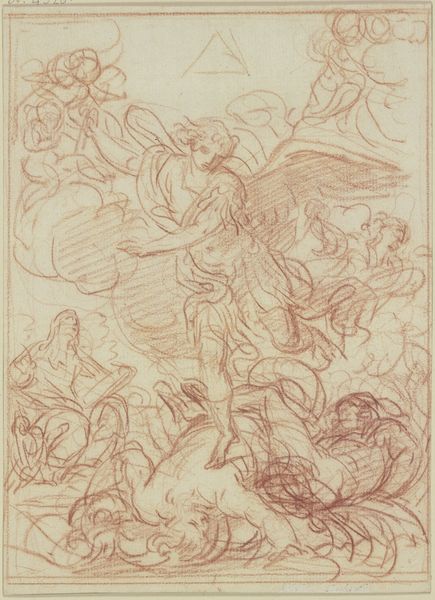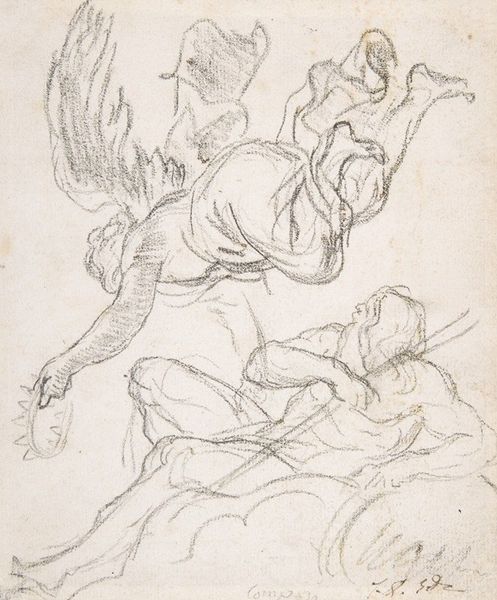
Susanna and the Elders (recto); Architectural design and other scribbles (verso) 1715 - 1725
0:00
0:00
drawing
#
drawing
#
narrative-art
#
baroque
#
figuration
#
men
#
academic-art
#
male-nude
Dimensions: Sheet: 7 5/8 x 5 3/16 in. (19.4 x 13.1 cm)
Copyright: Public Domain
Curator: Look at this fascinating drawing by Giovanni Battista Pittoni, dating back to between 1715 and 1725, titled "Susanna and the Elders." Editor: The composition feels very dynamic, even unfinished. There's a clear sense of movement in the figures, a raw energy to the marks made by what I'm assuming is pencil. Curator: Precisely, it's a drawing, likely in graphite. Knowing Pittoni’s interest in narratives tackling power, gender, and societal expectations, it invites a dialogue with feminist theory. How do you see the representation of Susanna in the context of that power dynamic? Editor: Well, focusing on the materials, the use of graphite itself—such a common, accessible medium—hints at the initial stages of planning a work. Considering Susanna's vulnerability, perhaps the rawness of the sketch mirrors her exposure, emphasizing the power imbalance inherent in the male gaze. I am interested in labor as well, I suspect an underpaid apprentice may have helped to create this image. Curator: Absolutely, framing it through the power dynamics in play sheds light on the male gaze as an act of coercion. Considering this drawing in relation to contemporaneous societal norms brings questions to the forefront, in regards to acceptable roles for women and who determines what a respectable woman can and cannot do. Editor: From a materialist perspective, the architecture only sketched here, and seemingly on the verso side, is as crucial as the foreground narrative. The incomplete quality is compelling! It directs us back to questions regarding how it was made: How the support was prepared, what pencils did the artist and shop use, and were any assistants involved? The story isn’t only in the biblical tale, but the tangible methods of production, distribution, and who may have accessed such a preparatory piece. Curator: And within those methods of production lie codified expectations. The architecture could symbolize a societal structure, reflecting not just literal walls but the oppressive systems. When Susanna, bound by these expectations, is judged under an unfair system, we realize the narrative reflects real-world circumstances. Editor: I concur that the symbolic readings offer important commentary, even now. Viewing this preliminary sketch as more than an aesthetic exercise also forces us to think about artistic creation outside traditional aesthetic spheres and towards tangible things. I leave today with an awareness of the artifice required for these scenes, which gives the viewer another interpretation. Curator: That's well said. The power of this image really does lie in both its raw immediacy and the intricate societal structures it reflects.
Comments
No comments
Be the first to comment and join the conversation on the ultimate creative platform.
